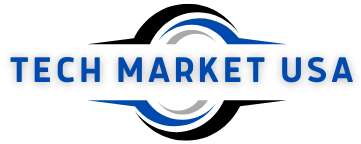Students engaged with technical writing, deal with various documents, including instructional guides, standard operating procedures, and more. No two days are alike, and the work is usually interesting.
Even technical writing as a profession has gained immense popularity as well. In fact, technical writers’ employment is expected to grow 12% between 2020 and 2030, faster than the average for all occupations.
However, students specifically new to technical writing face several challenges in the course of their work or edit my paper.
Hence, if you are facing the same, this blog will guide you better. Furthermore, experts have mentioned here some of the common challenges and with a pro tip.
Keep reading!
1. Last-minute product modifications
Last-minute changes to the product can catch technical writers off guard. Often during an internship, when a student’s (intern) documentation is complete, just before publication, the development team announces that they are shipping several new features that were not originally planned. For more read my assignment help reviews
So, you must update your documentation to reflect the new changes at the end moment. It is because, products are constantly evolving, and you must keep up to provide the best documentation or paper help for your users.
Tip:
Always allow enough time to incorporate new changes into your technical writing. Remember that your documentation is never “finished,” and changes will be less surprising. Collaborate closely with the engineering team to reduce the likelihood of last-minute changes.
2. Inadequate information about product users
To be able to write effective technical content, you must first understand who your target audience is. You must know the age, location, job status, and other details. Successful documentation depends on a thorough understanding of the users, without which your technical writing will be less than useless.
You must learn as much as possible about your users in order to tailor your documentation to their needs. Therefore, technical writers should be the organisation’s user advocates, giving them a voice within the product.
Tip:
To learn more about your customers, conduct user interviews. Collaborate with the marketing team to incorporate their user personas into your technical documentation. Work closely with customer support to understand the types of questions users are asking, and then tailor your documentation to address the most common user concerns.
3. Seeking information from Subject Matter Experts
Collecting information from Subject Matter Experts is an important part of a technical writer’s job. You will oversee conducting interviews, reviewing content, and publishing these co-workers’ ideas.
SMEs are busy people and may not have time to respond to your request for documentation input. It is not a good idea to ask for contributions at the last minute and expect a good response.
Tip:
Outside of the times when you need their assistance, network with SMEs. Stop by their desk for a chat and to learn more about their job. When the time comes to solicit their input, you will be able to put in the necessary background work to successfully solicit a contribution.
4. Documentation is inconsistent
Users expect technical writing to be coherent and convey clarity. Unfortunately, this does not always occur when a document has been written over time or updated haphazardly without regard for consistency and readability.
The document’s style, layout, tone, and so on may be inconsistent. For example, you may address the readers as “you” in one section of the document and “they” in another, causing readers to become confused.
Tip:
If you are editing an existing document, try understanding the surrounding context, such as tone and tense. Integrate your changes into the existing document, so the reader gets the sense. Use a style guide to ensure consistency of voice throughout the documentation and guide multiple authors who may be working collaboratively.
5. Disorganized Structure
Because your content was not adequately planned and is illogically structured, technical documents may confuse readers. Information in the text is difficult to find, sections do not flow naturally from one another, and so on.
Do not forget to plan your documentation ahead of time, so you have a structure to follow when writing the content.
Tip
Take the time to consider the document’s overall structure before beginning the writing process. When planning the layout of the document, a simple outline will work wonders. Request your peers to thoroughly review your document and make suggestions for changes.
6. Obtaining feedback on your work
Getting people to review your work is one of the most difficult challenges, especially if you are the team’s sole writer. If no one ever reviews your documentation, flaws in your writing will go unnoticed and be passed on to the end user. This reflects poorly on you and the organization.
To bring documentation up to publication standard, it must go through a review process. Therefore, make time in your writing for a thorough review, and follow up several times if necessary.
Tip
Be as specific as possible about what you want from a review, and send your work to colleagues with enough time for them to respond with their feedback. Do not be afraid to follow up several times until you get the desired quality review.
Final thoughts
Technical writing is a rewarding and challenging profession. However, do not be surprised if you face these challenges as a technical writer and remain motivated to overcome them.
Hence, to make it a success, take this blog as your go-to guide, and you will be able to easily overcome the challenges.
Author Bio:
Denny Martin is a professional academic writer at one of the most reliable websites, essay.reviews. He has years of expertise in creating highly engaging essays, assignments, research papers, thesis, case studies and other academic papers for students.

